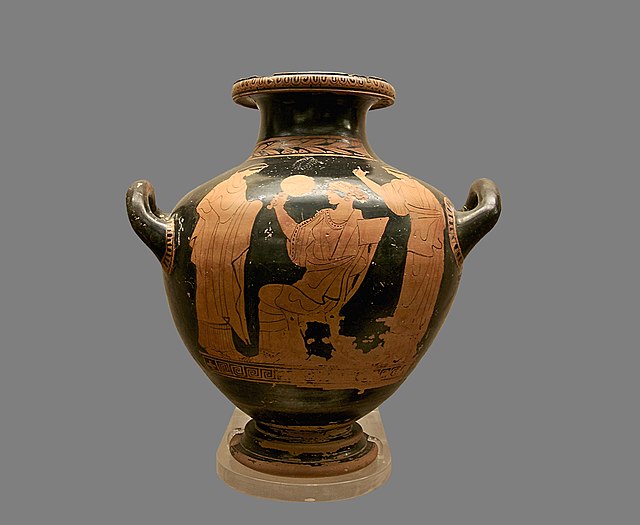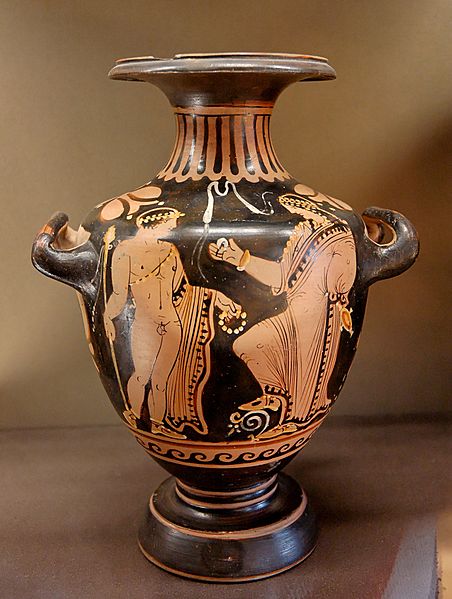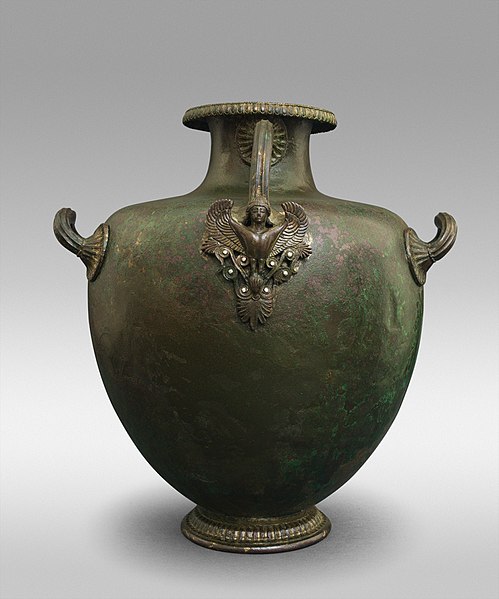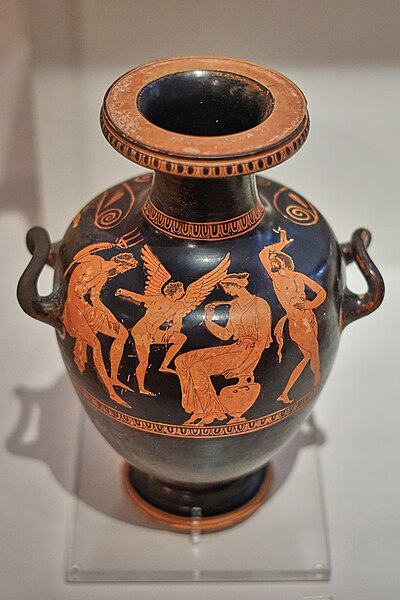The hydria is a form of Greek pottery from between the late Geometric period and the Hellenistic period. The etymology of the word hydria was first noted when it was stamped on a hydria itself, its direct translation meaning 'jug'.
A hydria, c. 470–450 BC
Red-figure hydria, c. 360–350 BC, from Paestum; the vertical handle used for pouring is located on the opposite side (Department of Greek, Etruscan and Roman Antiquities, Louvre).
Bronze hydria / kalpis with siren handle attachment, c. 460–450 BC, housed in the Vassil Bojkov Collection, Sofia, Bulgaria
Hydria. Poseidon and Amymone, with Eros between them. The presence of a Satyr behind Amymone suggests that the scene was probably inspired by a satyr play. From Atalanti. By the Hippolytos Painter. 375–350 BC.
Black-figure pottery painting, also known as the black-figure style or black-figure ceramic, is one of the styles of painting on antique Greek vases. It was especially common between the 7th and 5th centuries BCE, although there are specimens dating in the 2nd century BCE. Stylistically it can be distinguished from the preceding orientalizing period and the subsequent red-figure pottery style.
Heracles and Geryon on an Attic black-figured amphora with a thick layer of transparent gloss, c. 540 BCE, now in the Munich State Collection of Antiquities.
Athena wearing the aegis, Attic black-figured hydria by the potter Pamphaios (signed) and the Euphiletos Painter, c. 540 BCE. Found in Tuscania, now in the Cabinet des Médailles, BNF, Paris
Scene from a black-figure amphora from Athens, 6th century BCE, now in the Louvre, Paris
Hercules drives Cerberus ahead of him. The beast turns one of its heads back in a threatening manner and raises its snake tail. Faultily fired Attic neck amphora by the Bucci Painter, c. 540 BC, found in Vulci, now in the Munich State Collection of Antiquities








